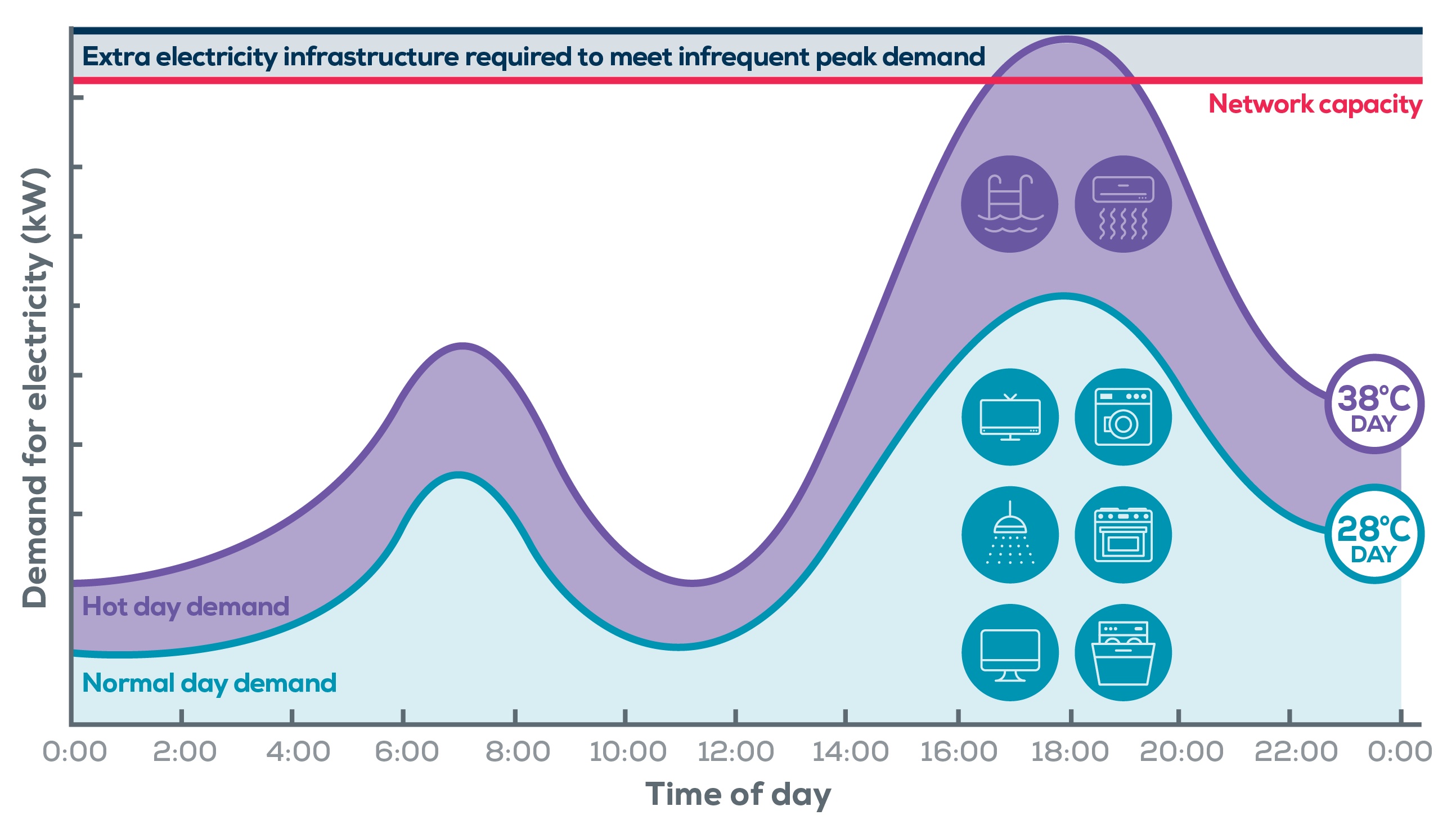Peak demand is one of the biggest factors impacting the cost of providing our power distribution infrastructure, so it's important we manage and help reduce it.
Electricity demand refers to the amount of electricity required by households, businesses and industry in the Endeavour Energy distribution network area at any point in time.
Most of us tend to use more electricity in the afternoon and evening. This is when we switch on the lights, air conditioning, TV and computer, and start cooking, having showers and washing clothes. All of this activity contributes to a significant spike in residential energy usage and what we refer to as peak demand.
This graph shows how much extra electricity is required to meet peak demands on hot days and the sources of this demand:

Major spikes in demand for electricity occur during heat waves and cold snaps when we turn on appliances to cool or warm our homes.
This only happens on a few days of each year on particularly hot afternoons, when thousands of households use their air conditioners at the same time and on very cold days when we turn on our high energy-consuming appliances, such as heaters to warm our homes.
What's the problem with peak demand?
It’s our responsibility to deliver electricity safely, reliably and efficiently to our customers. Our network is built to avoid power outages including on the extremely hot and cold days when there are major spikes in demand.
Millions of dollars are spent on extra electricity infrastructure just to cater for these major spikes, which only occur on a few days a year. In fact, 16 per cent of the capacity of our network is used for only a small number of hours, on a few very hot and very cold days each year. The cost of investing in this extra infrastructure is one of the causes of increasing electricity prices.
Why reduce peak demand?
We believe a more sustainable approach is to seek ways to reduce the demand for electricity during the peak periods.
If everybody reduces their use of appliances, particularly air conditioners, during peak times, less network infrastructure is needed and that helps keep costs down. This will have a flow-on effect to customers’ electricity bills.
Learn more about how to reduce peak demand.